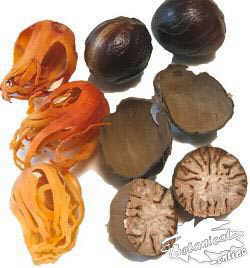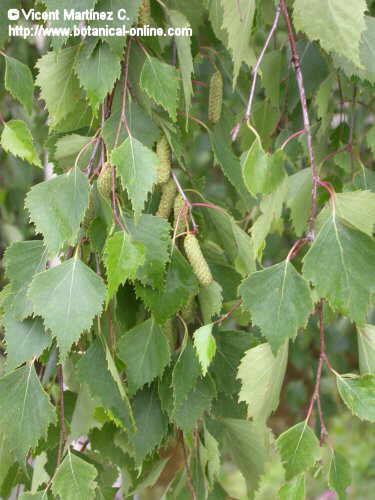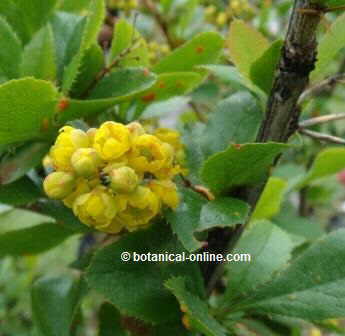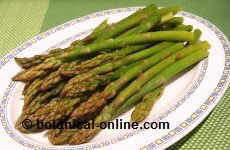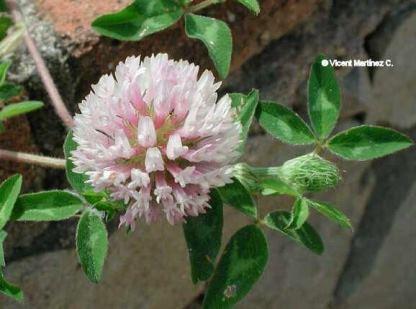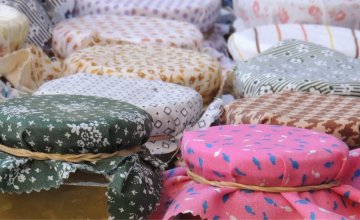Contents
Populus Features
Poplars (Populus spp.) Are deciduous trees of the Fagaceae family. They can grow very high. They are characterized by flowers in hanging catkins and because they are dioecious, that’s to say, male flowers appear on trees that are different from female flowers.
Poplars flowers develop in late winter or early spring on long stems that tend to bend down. It is very characteristic for poplars the presence of flowers before the leaves. Many poplars are well distinguished because if their leaves that turn yellow or golden in fall, before falling to the ground. Their fruits are capsule-shaped coated with a whitish cover, that, falling on the ground, covers the surface of a remarkable cotton-like layer.
These trees are grown for their wood that is light, fibrous, with a low resistance and a poor durability. It is mainly used to produce paper pulp, matches and packing boxes. For its rapid growth, they are considered the most appropriate kind of trees to produce biofuels. A very interesting research is being done to create varieties that produce more narrow treetops. This will allow very compact planting to obtain more logs from which to extract the cellulose that will become sugar to produce ethanol.
As garden trees, poplars are widely used in streets, plazas, parks and large gardens to provide shade in summer. They are also planted beside roads or farms as screens and windbreaks.
One should take into account the ability of this genus to produce large surface roots, capable of lifting or raising the ground surface of the sidewalks in towns and cities. Avoid planting near homes, since they can damage building foundation or plumbing system. Also the ease of regrowth of most of these species produce abundant seedlings that need to be constantly cut.
They need plenty of sun and a moist, rich and deep soil with a good drainage. They are fast growing plants though they do not live for long, averaging about 60 years.
Species of poplar or aspen
Among the most important species and varieties we can include:
European species
Species with smooth gray bark:
– White poplar (Populus alba) It is a tree up to 24 meters. Thick trunk, smooth and white on youth and darker and rougher as it grows. Beautiful young branches. Adult branches glabrous. Ovate leaves with 3 to 5 lobes and fitted with a white hairy on the underside that, moved by the wind, resembles a silver leaf in motion. Leaves dark green and glabrous above.
It blooms between March and April providing flowers gathered in hanging catkins 4-8 inches long. Male catkins covered with gray hair and red stamens; the female ones, greenish. Fruit in capsule.
Coming from the moist, sandy areas of central and southeastern Europe, it can be found as a cultivated tree in many parks, gardens and avenues around the world. It is a species that resists quite well with moderate levels of humidity, salty sea breezes and adapts to poor and alkaline soils. Not suitable for small gardens, it should be planted in places with considerable dimensions.
Among the main varieties we have:
– Populus alba f. pyramidalis, conical in shape.
– Populus alba ‘Nivea’
– Populus alba ‘richardii’ with yellow leaves.
– Populus alba x grandidentata
– Populus alba ‘Raket’
– Grey poplar (Populus canescens) (Populus x canescens) Many consider this tree as a hybrid poplar between white poplar (Populus alba) and aspen (Populus tremula). It is very much like white poplar though generally higher, reaching 30 meters easily. Like its predecessor, it has a trunk with smooth gray bark in youth that becomes darker as he gets older.
The branches of this tree are more upright than those of white poplar which gives it a more compact appearance. Unlike white poplar, its produces abundant offspring. Its lobed leaves are similar but less pronounced and more cordate. Like white poplar, without pubescence when adult and with a strong gray pubescence on the underside when young. Flowers in much shorter catkins (3-4 cm) It blooms earlier, because its flowers appear early in February. It can be found along rivers.
– Aspen (Populus tremula) A tree with a very fast and vigorous growth that rises to about 15 or 20 meters. Pyramidal in youth, it opens as she gets older. Trunk grayish with young branches whitish. Glabrous mature leaves from 3 to 8 cm long, on long flattened peduncles, that move and produce a distinctive sound waved on the breeze which provides the common name for this tree.
Limbo oval or nearly circular, dark green above and white-green on the back. Young leaves larger (up to 15 cm) and triangular, hairy at the back. Flowers gathered in catkins that bloom very early in late winter. Male catkins with very elongated anthers, gray, with reddish-purple stamens.
It comes from southern Europe, where it grows in wet mountainous areas. It is grown for its timber, which is primarily used for pulp and manufacture of matches.
Species with dark furrowed bark:
– Black poplar (Populus nigra): Widely studied in this section.
American species widely cultivated in Europe
Species with dark furrowed bark:
– Eastern cottonwood (Populus deltoides) is a very vigorous growing tree that can easily reach 30 meters.It presents a broad top. Its trunk is dark gray and has many cracks. Green branches when young that become grayer or darker as they age.
Bright buds provided with lots of resin. Large leaves till 20 cm long, triangular, clearly longer than wide with coarsely toothed margins, with short tips. Flowers in catkins up to 20 cm long, yellow and red stamens. Seeds with abundant shag.
It extends from eastern North America, where it grows on wet areas, to many parts of the world where it appears as a cultivated tree. It is particularly resistant to adverse conditions in the hinterland. It is grown mainly for timber production.
– Canada’s black poplar = Canadian poplar (Populus x canadensis) (Populus deltoides x nigra) is a hybrid formed from the cross between the black poplar (Populus nigra) and the Eastern cottonwood (Populus deltoides). It shows very different forms.
– Balsamic Species:
In this section, balsamifera species deserve special mention, because of their ecological importance and the use of their resins. They are a number of species characterized by having very rich resin buds. These products protect them from cold and insects.
Industry takes advantage of them for the manufacture of resins and balsams. They all have leaves with white underside and contain waxes, specially adapted to withstand low temperatures in the areas where they usually grow in the wild.
Among all of them we can point out:
– Canada balsam poplar = Balsam poplar (Populus balsamifera) Pyramid-like tree up to 30 meters. Trunk with furrowed dark bark. Ascending branches. Young twigs covered with a layer of very fragrant resin. Very prominent buds covered with the same layer of resin. (From them we obtain the so-called “Balm of Gilead” by extracting it in hot water). Leaves till 10 cm long, finely serrated, glaucous on the upper side, pale green on the underside. Long petiole with glands at the base. Female catkins larger than males. It blooms in mid spring and it is grown primarily for resin extraction.
Natural from northeast of Canada, it takes advantage of the less acidic richer soils to grow along with other trees such as balsam fir (Abies balsamea), white spruce (Picea glauca), black spruce (Picea mariana) and aspen (Populus tremula) In more Arctic open areas is often accompanied by other poplar very characteristic of this area: The California balsam poplar, although the distribution of the latter is much broader, stretching from Alaska to California where it is abundant.
Its wood is used, as most of the poplars, for the manufacture of packaging and pulp, although in the southernmost areas, it is used as building material, in the absence of more resistant wood.
– Black cotton wood = Western balsam poplar or California (Populus trichocarpa) The California balsam poplar species is the highest species of poplar. Some specimens have been found with more than 60 meters high, but it usually does not exceed 30 or even less. It is very similar to the Canada balsam poplar. It also presents a conical shape and it is also especially aromatic because of its buds that are long, conical. Its leaves are oval, glaucous on the upper side; clearer on the underside, with reddish petioles.
It grows in many parts of western North America, from Alaska to California. It was the first tree that people managed to discover its genome, in 2006.
Asian species that can be grown in Europe
– Japanese poplar (Populus maximowiczii);: A poplar species from northern China, Korea and Japan, that grows in the mountains between 500 and 200 meters. It reaches about 30 meters. Tree with a broad top and with the trunk ribbed, with dark color at maturity but young trees have smooth bark and a grayish green color.
Young shoots have red bark and are covered with hairs. Buds conical, pointed and sticky. Its elliptical or obovate leaves have smooth and rounded petioles, glaucous above; pale green below. Male catkins till 10 cm in length, the female ones longer. It blooms in mid-spring. Its wood is used for construction, pulp and manufacture of matches.
– Yunnan Poplar (Populus yunnanensis): Tree up to 24 m high, from the Yunnan region of China where it grows in the mountains from 1300 to 1700 meters above sea level. Very thick trunk with furrowed dark bark. Young branchlets reddish, angular, smooth, glabrous, with sticky buds.
Leaves till 15 cm long, bright green, triangular, with reddish petioles. Bright green above, red at the midrib, lower surface grayish white. Male flowers in hanging catkins up to 20 cm in length. It blooms in April. It’s the kind of poplar that is best suited to drought and heat.
List of species and varieties of poplars |
| Populus adenopoda Populus afghanica Populus alaschanica Populus alba Populus amurensis Populus angustifolia Populus candicans Populus canescens Populus cathayana Populus charbinensis Populus ciliata Populus davidiana Populus deltoides Populus deltoides monilifera Populus euphratica Populus fremontii Populus girinensis Populus glauca Populus grandidentata Populus haoana Populus heterophylla Populus hsinganica Populus iliensis Populus intramongolica Populus kangdingensis Populus keerqinensis Populus koreana Populus lancifolia
Populus laurifolia Populus lasiocarpa Populus mainlingensis Populus manshurica Populus maximowiczii Populus nakaii Populus nigra Populus ningshanica Populus pamirica Populus pilosa Populus platyphylla Populus pruinosa Populus przewalskii Populus pseudoglauca Populus pseudomaximowiczii Populus pseudosimonii Populus purdomii Populus qamdoensis Populus qiongdaoensis Populus rotundifolia Populus schneideri Populus sieboldii Populus simonii Populus suaveolens Populus szechuanica Populus talassica Populus tomentosa Populus tremula Populus tremoloides
Populus trichocarpa Populus trinervis Populus ussuriensis Populus violascens Populus wenxianica Populus wilsonii Populus wuana Populus wulianensis Populus X beijingensis Populus X berolinensis Populus X canadensis Populus X canescens Populus X gansuensis Populus X hopeiensis Populus X jrtyschensis Populus x jackii Populus X pseudotomentosa Populus X xiaohei Populus X xiaozhuanica Populus xiangchengensis Populus yuana Populus yunnanensis Populus shanxiensis Populus euphratica Populus minhoensis Populus ussuriensis Populus yatungensis |
![]() More information about poplar.
More information about poplar.

